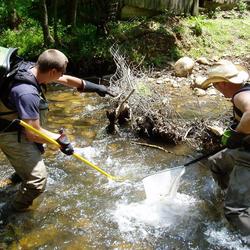Fish and Aquatic Species
The USGS is the only federal science agency dedicated to providing independent research that supports the conservation and management of the nation’s fisheries. Our researchers develop and apply specialized tools such as genetic tracking, hydrologic modeling, and fish disease diagnostics to answer the most pressing questions facing federal, Tribal, state, and local resource managers.













